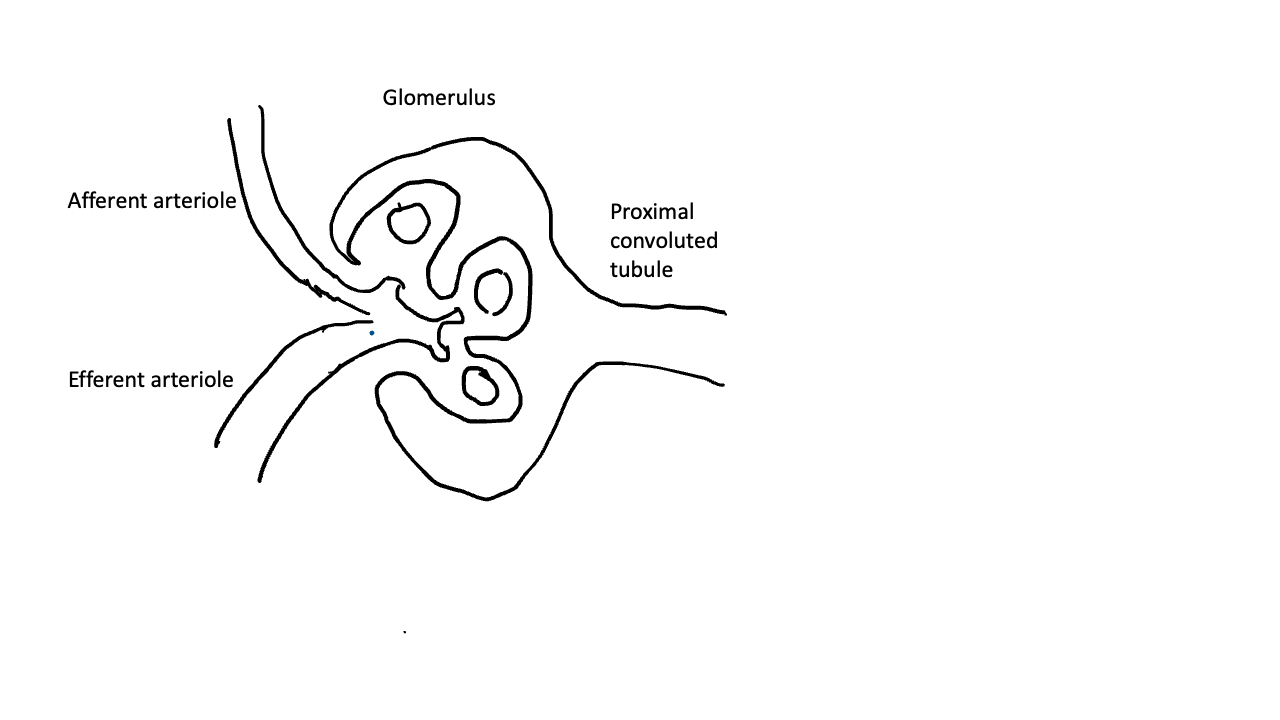It all starts here…at the glomerulus
The blood enters the glomerulus through the afferent arteriole (red arrows). The glomerulus filters the blood to make urine (yellow). The filtered blood exits via efferent arteriole (blue arrow).
The glomerular filtration rate (GFR) is a crucial indicator of kidney function, reflecting how effectively the kidneys are filtering waste products from the bloodstream. Various factors can influence GFR, including blood pressure, volume status, and the presence of kidney disease.
Regulation of glomerular function is essential for maintaining homeostasis in the body, including electrolyte balance, fluid volume, and acid-base balance. Dysfunctions in glomerular filtration can lead to conditions such as proteinuria, where excess protein is present in urine, or glomerulonephritis, which involves inflammation of the glomeruli.
The glomerulus is a critical structure within the nephron, the functional unit of the kidney. The glomerulus plays a key role in the filtration process by allowing water, electrolytes, and small molecules to pass through while retaining larger molecules and blood cells. This selective filtration occurs due to the porous nature of the glomerular capillary walls, which are lined with specialized endothelial cells. These cells possess openings that facilitate the passage of solutes and water while preventing the leakage of larger proteins, such as albumin.

